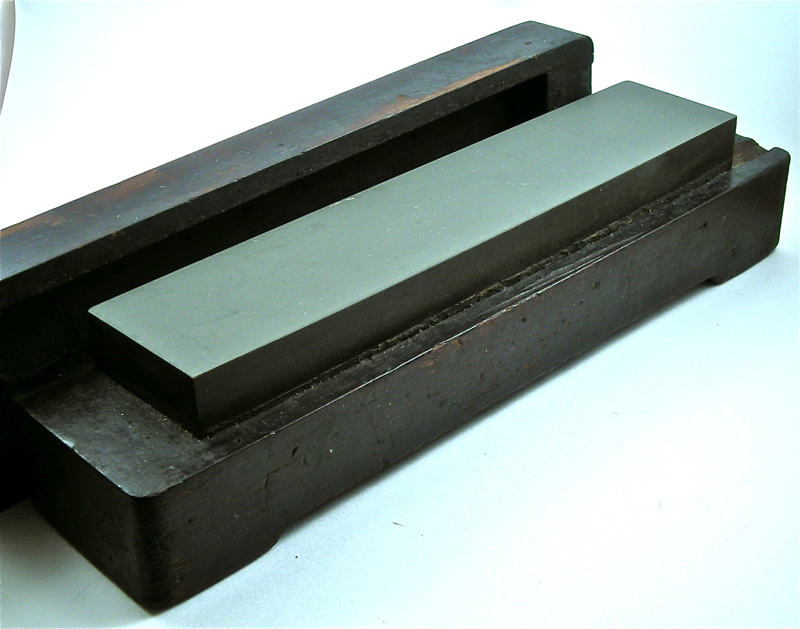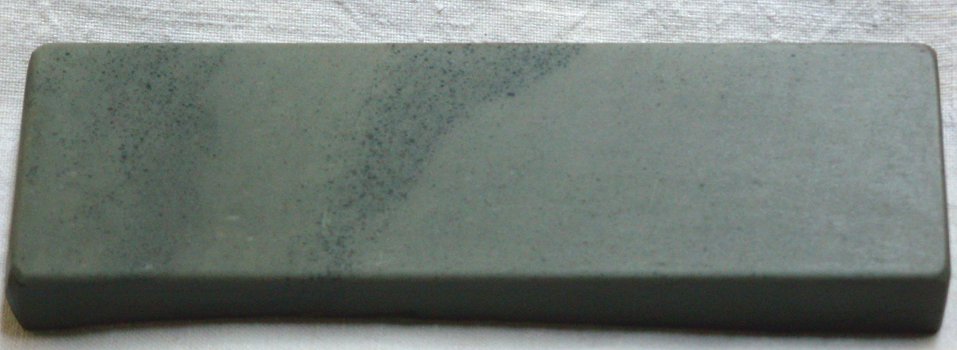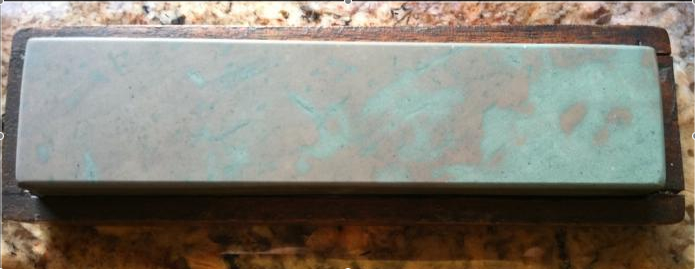Difference between revisions of "Charnley Forest Hones"
m |
|||
| Line 1: | Line 1: | ||
| − | Charnley Forest hones are very fine and quite hard. Some rate them at around 15k to 20k. They are very slow cutters, some | + | Charnley Forest hones are very fine and quite hard. Some rate them at around 15k to 20k. They are very slow cutters, and some users suggest as many as 100 to 200 laps to finish. Some recommend the use of oil instead of water, but not all oils are suitable. It seems slurry stones are not traditionally used, as they are typically not found in boxes designed to hold larger Charnley Forest stones. Lapping a Charnley Forest stone with a low grit lapping stone can remove the polished surface which is desired for the best result polishing edges. Lapping leaves a matte finish, which will become more glossy through use or by lapping with higher grit abrasives. |
| − | + | These stones are often irregular in shape/cut, and their coloration varies. They are commonly a green-grey mix with spots or streaks of red/pink/purple/black. Some are an unfigured grey-green. Charnley Forest stones are commonly found in simple wooden boxes, but the same is true for many other vintage stones, so a box of this type does not guarantee an Charnley Forest. | |
[[image:Charnley-02.jpg]] | [[image:Charnley-02.jpg]] | ||
Latest revision as of 17:54, 28 December 2010
Charnley Forest hones are very fine and quite hard. Some rate them at around 15k to 20k. They are very slow cutters, and some users suggest as many as 100 to 200 laps to finish. Some recommend the use of oil instead of water, but not all oils are suitable. It seems slurry stones are not traditionally used, as they are typically not found in boxes designed to hold larger Charnley Forest stones. Lapping a Charnley Forest stone with a low grit lapping stone can remove the polished surface which is desired for the best result polishing edges. Lapping leaves a matte finish, which will become more glossy through use or by lapping with higher grit abrasives.
These stones are often irregular in shape/cut, and their coloration varies. They are commonly a green-grey mix with spots or streaks of red/pink/purple/black. Some are an unfigured grey-green. Charnley Forest stones are commonly found in simple wooden boxes, but the same is true for many other vintage stones, so a box of this type does not guarantee an Charnley Forest.




